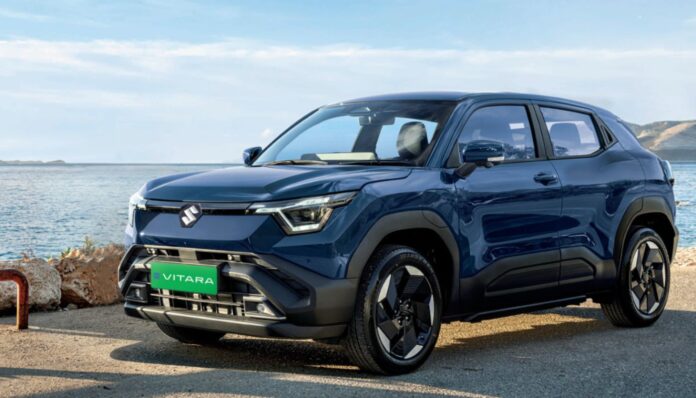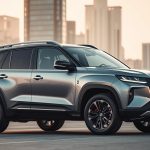6 New Car Launches Happening This Year
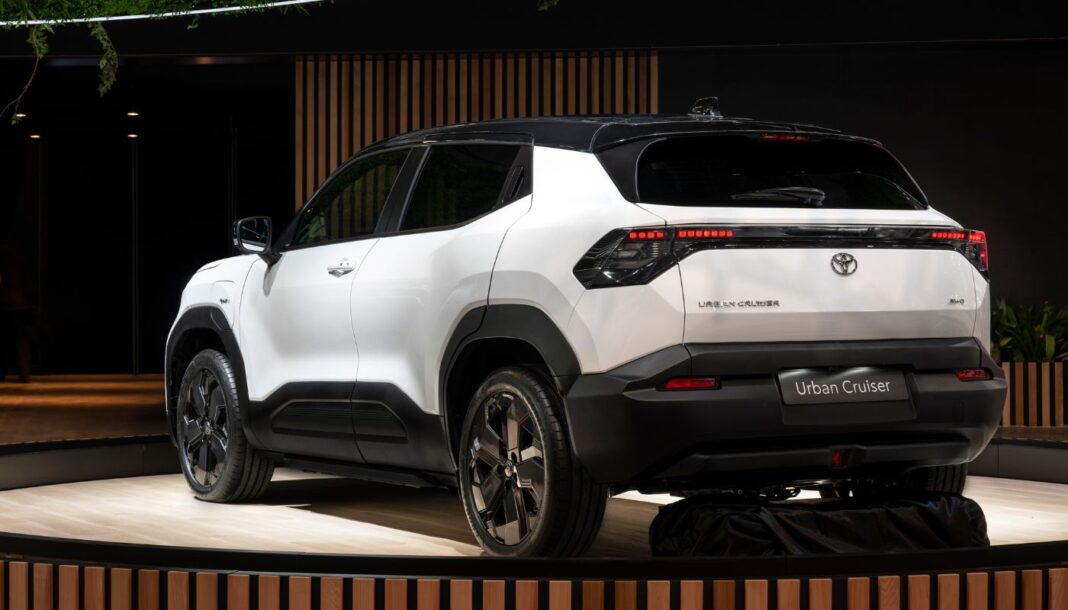
Here’s a look at six upcoming car launches from India’s top six automotive brands, as competition heats up across multiple segments.
1. Maruti Suzuki
Maruti Suzuki, India’s largest carmaker, is finally stepping into the electric vehicle segment with the eVX-based electric SUV, expected to be called the e-Vitara. Likely to launch around September 2025, this midsize SUV will offer a driving range of over 500 km per charge. Alongside this, Maruti is also expected to refresh some of its popular models like the Swift and Dzire with updated designs and enhanced features.
2. Hyundai
Hyundai will continue to strengthen its SUV lineup with the new Creta EV, targeting the growing electric mobility space. The brand is also planning a facelift for the Venue and i20, with new design elements and tech upgrades. Additionally, Hyundai may bring in a performance-oriented N Line version of one of its existing models to appeal to younger buyers.
3. Mahindra
Mahindra has a packed year ahead. The spotlight will be on the launch of the Thar 5-door, a much-anticipated SUV that blends adventure with practicality. The automaker is also expected to push forward with its Born Electric (BE) series, with the first concept-based model possibly entering the production stage. With a stronghold in SUVs, Mahindra is focused on offering more spacious, tech-loaded options in 2025.
4. Tata Motors
Tata continues to lead the charge in the EV segment. The carmaker plans to launch the Curvv EV, a stylish crossover coupe with advanced design and futuristic interiors. Later, the ICE (petrol/diesel) version of the Curvv is also expected. Updates to existing models like the Safari and Harrier, along with potential special editions, will keep Tata’s lineup fresh and competitive.
5. Toyota
Toyota will expand its hybrid and SUV portfolio in India. The company may introduce a compact SUV below the Urban Cruiser Hyryder to tap into the budget-conscious SUV segment. Additionally, Toyota is exploring the idea of localizing more hybrid models to meet rising demand for fuel efficiency and eco-friendly vehicles.
6. Kia India
Kia is ready to launch the updated Kia Sonet with design revisions and new tech features. The brand is also testing its electric SUV, likely to be called Kia EV5, tailored for Indian roads and customers. With its focus on youth-oriented design and strong after-sales support, Kia aims to boost its market share further.
 1. Maruti Suzuki e Vitara: A Bold Step Into the Electric Future
1. Maruti Suzuki e Vitara: A Bold Step Into the Electric Future
Maruti Suzuki, India’s largest car manufacturer, is all set to make a grand entry into the electric vehicle segment with its much-awaited e Vitara. First showcased at the 2025 Bharat Mobility Global Expo, the e Vitara marks a significant step forward in Maruti Suzuki’s commitment to sustainable mobility and future-ready design.
 Design and Platform
Design and Platform
The e Vitara is built on Suzuki’s purpose-developed Heartect EV skateboard platform. This new-age platform ensures a low center of gravity, structural safety, and better weight distribution. A large portion of the body is made with high-tensile steel, offering both rigid strength and improved crash safety. With its futuristic looks, LED lighting, and a sleek yet muscular stance, the e Vitara is expected to be a head-turner on Indian roads.
 Battery and Range
Battery and Range
Maruti Suzuki plans to offer the e Vitara in two battery options:
- 48.8 kWh standard battery
- 61.1 kWh larger battery pack
The bigger battery pack is expected to deliver a driving range of over 500 km per charge, making it one of the longest-range EVs in its segment. While the international model may feature all-wheel-drive (AWD), the India-spec version will most likely come with front-wheel-drive (FWD) to keep costs competitive.
 Color Options and Variants
Color Options and Variants
Maruti will launch the e Vitara in several attractive single and dual-tone color options, including:
- Opulent Red
- Arctic White
- Grandeur Grey
- Bluish Black
- Splendid Silver
- Nexa Blue
Dual-tone variants will feature contrast roofs in Bluish Black, adding to the SUV’s sporty and premium appeal.
Trims will include Delta, Zeta, and Alpha, with the base Delta likely paired with the smaller battery pack, while the Zeta and Alpha variants may offer both battery options.
 Features and Technology
Features and Technology
Maruti Suzuki’s e Vitara will come loaded with features, including:
- A large infotainment touchscreen with connectivity support
- Fully digital instrument cluster
- Level 2 ADAS (Advanced Driver Assistance System)
- Six airbags
- 360-degree surround-view camera
- Front ventilated seats
- Panoramic sunroof
- 18-inch alloy wheels
The electric SUV will also support DC fast charging, with a 0–80% charge time of around 50 minutes.
 Launch Timeline and Market Position
Launch Timeline and Market Position
The Maruti Suzuki e Vitara is expected to launch around September 2025 and will be sold through the premium Nexa dealerships across India. It will compete with the likes of Tata Curvv EV, Hyundai Creta EV, and Mahindra XUV400 in the mid-size electric SUV segment.
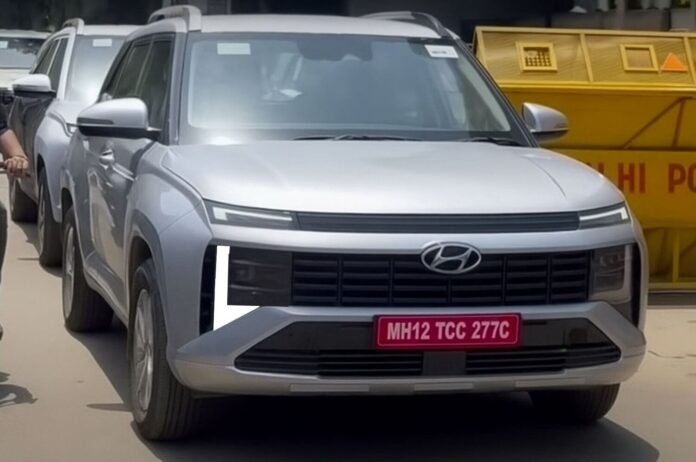
2.New-Gen Hyundai Venue
Design
The New-Gen Hyundai Venue sports a bold front grille, sleeker LED DRLs, and revamped bumpers. With an urban SUV stance, it combines rugged character with modern elegance, making it one of the most stylish sub-compact SUVs in India.
Performance
The SUV is offered with multiple engine options including a 1.2L petrol, 1.0L turbo-petrol, and a 1.5L diesel. The smooth-shifting DCT and iMT options make driving effortless, while its suspension has been tuned for Indian roads.
Features
Key highlights include a 10.25-inch touchscreen, wireless Apple CarPlay and Android Auto, connected car tech (Bluelink), automatic climate control, ambient lighting, rear AC vents, and multiple airbags for safety.
Price & Variants
The New-Gen Hyundai Venue is available in multiple variants starting from ₹7.99 lakh (ex-showroom). The top-end turbo-petrol variant with dual-tone interior and ADAS tech is priced around ₹13.5 lakh.

3.New-Gen Mahindra Bolero Neo
Design & Styling
The New-Gen Mahindra Bolero Neo blends rugged Bolero DNA with urban styling. It features a refreshed front grille, new headlamps with DRLs, alloy wheels, and a more aerodynamic stance — making it suitable for both city and rural use.
Performance
Powered by the tried-and-tested 1.5L mHawk diesel engine, the Bolero Neo delivers reliable power and efficiency. The rear-wheel drive setup, mechanical locking differential (in N10 variant), and robust chassis offer great drivability on rough terrain.
Features & Technology
The SUV includes a 7-inch infotainment system, cruise control, steering-mounted controls, height-adjustable driver seat, and dual airbags. It’s also equipped with features tailored for practical everyday use in Indian conditions.
Pricing
Prices for the New-Gen Bolero Neo start from ₹9.95 lakh (ex-showroom), with the top-spec N10 (O) variant going up to ₹12.5 lakh. It’s a value proposition for those seeking rugged reliability with a modern touch.

4.Tata Sierra EV
The Tata Sierra EV marks the bold return of an iconic nameplate, this time as a fully electric SUV. Showcased as a near-production concept, the Sierra EV is built on Tata’s Gen 2 EV architecture, combining modern design with nostalgic elements from the original Sierra of the 1990s.
Design & Styling
The Sierra EV carries a futuristic yet rugged SUV stance with a full-length LED light bar, signature wraparound rear glass (paying tribute to the original model), flush door handles, and chunky cladding. The cabin promises a minimalist, lounge-like feel with high-end sustainable materials and dual-screen displays.
Performance & Platform
While Tata hasn’t disclosed full technical specs yet, the Sierra EV will be based on the Gen 2 platform that supports larger batteries, longer range (expected 500+ km), and advanced ADAS features. It is likely to feature a dual-motor all-wheel-drive variant as well.
Features
The Sierra EV will come equipped with a panoramic sunroof, digital cockpit, premium audio system, OTA updates, and Level 2 ADAS. The seating layout is expected to be both 5- and 4-seater lounge-style, depending on the variant.
Expected Launch & Price
Tata Motors is likely to launch the production version of the Sierra EV in 2026. Pricing is expected to start from ₹25–30 lakh (ex-showroom), positioning it as a premium lifestyle electric SUV.
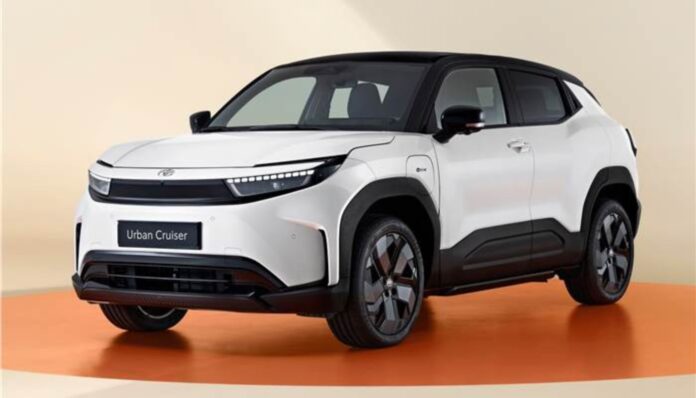
5.Toyota Urban Cruiser BEV
The Toyota Urban Cruiser BEV is Toyota’s upcoming entry into the mass-market electric SUV space in India. Based on a shared EV platform co-developed with Maruti Suzuki, this battery electric vehicle aims to blend urban practicality with Toyota’s global EV expertise.
Design & Appearance
The Urban Cruiser BEV will feature a futuristic look distinct from its ICE sibling, with a closed-off front grille, aerodynamic alloys, LED lighting, and unique blue accents to emphasize its electric identity. The compact SUV will also have a higher ground clearance and roof rails to maintain a sporty stance.
Platform & Battery
Expected to be underpinned by Toyota and Suzuki’s jointly developed EV platform, the Urban Cruiser BEV will offer a driving range of around 350–400 km per charge. It will likely house a 40–50 kWh battery pack with both standard and fast-charging options.
Features & Interior
Toyota is expected to load the BEV with a digital instrument cluster, 9-inch touchscreen with wireless Apple CarPlay/Android Auto, connected car tech, automatic climate control, and advanced safety features like six airbags, ESP, and possibly Level 1 ADAS.
Launch Timeline & Price
The Toyota Urban Cruiser BEV is expected to debut in late 2025 or early 2026, with a starting price of around ₹13–15 lakh (ex-showroom). It will compete with the likes of the Tata Nexon EV, Mahindra XUV400, and upcoming Maruti EV.
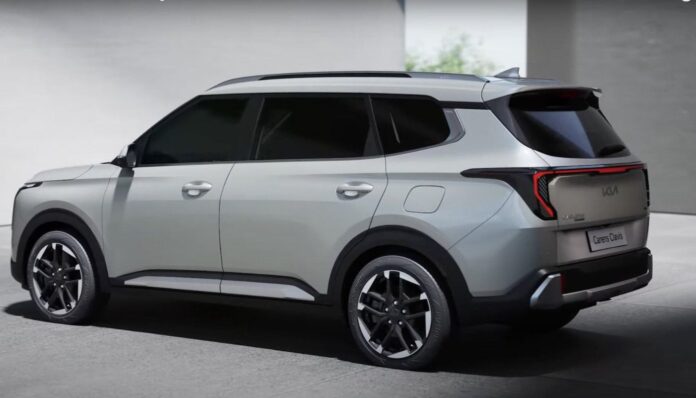
Kia Clavis EV: The Compact Electric SUV Set to Redefine Urban Mobility
In a rapidly electrifying automotive landscape, the Kia Clavis EV is poised to make a bold statement. This all-electric sub-compact SUV, which is expected to launch in India in 2025 or early 2026, will combine futuristic design, practical city-focused dimensions, and advanced technology tailored for new-age mobility. As part of Kia’s electrification strategy, the Clavis EV will not just be another urban crossover—it aims to set a new benchmark in the affordable EV segment.
In this article, we delve deep into the Clavis EV’s design philosophy, expected powertrain and performance, key features, technology, safety, pricing, competition, and what it means for the Indian EV space.
1. Introduction to the Kia Clavis EV
Kia has already made a mark in India with models like the Seltos, Sonet, and EV6. While the EV6 caters to premium buyers, the Clavis EV will be the brand’s first serious attempt at mass-market electrification. Designed for urban and semi-urban customers who seek style, sustainability, and everyday practicality, the Clavis EV is expected to be a game-changer for both Kia and the electric vehicle segment in India.
The Clavis EV will likely be manufactured locally, which will help keep costs competitive. It will sit below the Seltos in Kia’s lineup but might slot above the Sonet in terms of features and pricing, especially given its electric nature.
2. Design and Styling
The Kia Clavis EV has already been spotted testing under camouflage, but certain elements can be deduced from the body proportions and Kia’s current design language.
Exterior
The Clavis EV is expected to carry a boxy and upright stance, similar in silhouette to compact off-roaders like the Suzuki Jimny but with a modern, urban twist. This design is not only practical for urban maneuverability but also offers better cabin packaging. Expect these design highlights:
- EV-specific closed front grille with a pixel-style LED DRL signature.
- Slim LED headlamps integrated into the front fascia for a clean, minimalist look.
- Dual-tone alloy wheels, likely in the 16–17 inch range, optimized for low rolling resistance.
- Flush-type door handles (on higher variants) to improve aerodynamics.
- Prominent wheel arches and black body cladding to add a rugged SUV appeal.
- A tailgate-mounted spoiler, full-width LED light bar at the rear, and a sharp tail-lamp design to emphasize modernity.
Its upright glasshouse and boxy shape also ensure better visibility for city driving.
Dimensions (Expected)
- Length: Around 4,000 mm
- Width: Approx. 1,750 mm
- Height: Over 1,600 mm
- Wheelbase: Close to 2,500 mm
This would place the Clavis EV in the same category as the Tata Nexon EV and Mahindra XUV400 in terms of road presence.
3. Interior and Cabin Experience
While official images of the interior are yet to be revealed, based on Kia’s global design language and the recent upgrades seen in the Sonet and Seltos, we can expect a premium and tech-rich cabin.
Cabin Highlights (Expected)
- Minimalist dashboard layout with high-quality materials and ambient lighting.
- Dual-screen setup with a digital driver display and infotainment touchscreen (likely 10.25 inches).
- Floating center console with rotary gear selector and wireless charging pad.
- Synthetic leather upholstery in higher trims, with eco-friendly materials in line with its EV identity.
- 60:40 split rear seats, flat floor, and ample headroom and legroom.
Despite its compact size, the boxy shape ensures good interior packaging and a tall driving position that Indian buyers love.
4. Powertrain and Performance
While Kia has not officially released technical specifications, we can estimate the mechanical setup based on global trends and Kia’s existing EVs.
Battery and Motor
- Battery Pack: Expected to be in the 40–45 kWh range
- Motor Output: Around 100–120 PS, with torque in the 200–250 Nm range
- Drivetrain: Front-wheel drive (FWD) setup
- Range: Estimated real-world range of 300–400 km on a single charge
This setup will be more than adequate for city and inter-city commutes, aligning well with Indian driving conditions and user expectations.
Charging Options
- DC Fast Charging: 0-80% in around 45 minutes with a 50 kW charger
- AC Home Charging: 6–7 hours with a 7.2 kW wall-box charger
- Portable charging solutions and V2L (Vehicle to Load) tech may also be offered in top variants.
5. Features and Technology
Kia is known for loading its cars with segment-first and segment-best features, and the Clavis EV will be no exception. The electric nature will allow for even more tech integration.
Expected Features:
- 10.25-inch touchscreen infotainment with Apple CarPlay, Android Auto
- Fully digital instrument cluster
- Connected Car Tech (Kia Connect) with live tracking, geo-fencing, and remote climate control
- Wireless smartphone charger
- Ventilated front seats
- Panoramic sunroof
- Multi-level regenerative braking
- Drive modes (Eco, Normal, Sport)
Additionally, features like OTA updates, remote diagnostics, and EV-specific analytics like charging logs and efficiency stats will likely be part of the package.
6. Safety
With growing focus on safety in India, the Clavis EV is expected to be well-equipped in this regard.
Expected Safety Kit:
- 6 airbags
- ABS with EBD
- ESC (Electronic Stability Control)
- Hill-start assist and descent control
- 360-degree camera
- Rear parking sensors
- Tire pressure monitoring system (TPMS)
- ISOFIX child seat mounts
In higher variants, ADAS Level 1 features like lane departure warning, forward collision warning, and auto emergency braking may also be offered, as seen in the Seltos facelift.
7. Variants and Customization
Kia is likely to offer the Clavis EV in multiple variants to cater to a wide audience:
- Base Variant: Focused on affordability, with essential EV features and smaller battery
- Mid Variant: Balanced package with enhanced infotainment and connectivity
- Top Variant: Full-loaded with premium features, tech, and safety
Customization options like dual-tone colors, contrast roofs, interior themes, and accessory kits (roof carriers, EV decals, etc.) are also expected.
8. Expected Pricing
Given its positioning, local manufacturing, and battery size, the Clavis EV is expected to be priced between:
- ₹11.5 lakh – ₹16.5 lakh (ex-showroom)
This makes it a direct competitor to:
- Tata Nexon EV MR and LR
- Mahindra XUV400
- MG ZS EV (base variants)
- Upcoming Hyundai Exter EV (expected)
Government subsidies and FAME-II benefits will likely make lower variants even more affordable in certain states.
9. Competition Analysis
The compact electric SUV space is heating up in India, and the Clavis EV will face strong competition from both established and upcoming players:
| Model | Battery Range (km) | Price (₹ lakh) | Unique Selling Point |
|---|---|---|---|
| Tata Nexon EV | 325–465 | 14.49–19.29 | Market leader, proven reliability |
| Mahindra XUV400 | 375–456 | 15.49–17.49 | Fastest EV in segment, sporty |
| MG ZS EV | 461 | 18.98–23.98 | Larger size, premium interiors |
| Hyundai Exter EV (upcoming) | 350+ (est.) | 10–13 (est.) | Value-focused urban EV |
| Kia Clavis EV | 350–400 (est.) | 11.5–16.5 | Fresh design, tech-rich |
What will work in Kia’s favor is the brand’s focus on design, after-sales service, and feature richness.
10. Sustainability and EV Ecosystem
The Clavis EV is expected to come with sustainability in mind. Kia might offer:
- Recyclable interior materials
- Low-emission battery production process
- Partnerships for battery recycling
- Solar panel accessories (optional)
Kia is also expected to expand its EV charging network and work with Indian infrastructure partners to provide fast chargers at key locations across cities and highways.
11. Launch Timeline
While official confirmation is awaited, the Clavis EV is expected to debut in:
- Global reveal: Late 2025
- India launch: Q1 or Q2 of 2026
Test mules have already been spotted, and Kia’s aggressive EV strategy indicates that the Clavis EV will arrive sooner than later.
12. Final Thoughts: Is the Clavis EV Worth Waiting For?
The Kia Clavis EV is shaping up to be one of the most exciting electric SUVs in India’s growing EV landscape. With its urban-friendly size, premium design, robust performance, and loaded feature list, it offers a compelling alternative to traditional ICE cars and existing EVs.
Its bold design, tech-laden interior, competitive pricing, and the trust of Kia’s global brand will make it a strong contender for anyone looking to switch to electric without compromising on style or practicality.
For first-time EV buyers, city commuters, and young professionals seeking a sustainable yet aspirational car, the Clavis EV might just be the perfect fit.
READ MORE-CLICK HERE
MORE INFORMATION-CLICK HERE
Conclusion
The year 2025 is shaping up to be a revolutionary one for the Indian automotive industry. From rugged diesel-powered SUVs like the Bolero Neo+ to cutting-edge electric options like the Tata Harrier EV and Kia Clavis EV, this year offers something for every kind of car buyer. Whether you’re focused on performance, sustainability, or tech, these 6 new car launches will define the next phase of driving in India.
 FAQs
FAQs
Q1. Which is the most awaited EV launch in 2025?
A: The Tata Harrier EV and Maruti Suzuki eVX are among the most anticipated electric vehicles of the year.
Q2. Is the Kia Clavis EV suitable for city driving?
A: Yes, it is a compact EV designed specifically for urban environments, offering efficient range and tech-forward features.
Q3. Will the Tata Curvv offer both ICE and EV variants?
A: Yes, the ICE (petrol/diesel) variant is launching first in 2025, followed by the EV version later.
Q4. Is the new Mahindra Bolero Neo+ larger than the old one?
A: Yes, it offers more cabin space and a larger footprint while maintaining its rugged identity.
Q5. What makes the Creta N Line different from the standard Creta?
A: The N Line gets a sportier design, turbo engine, tuned suspension, and performance-focused styling cues.
